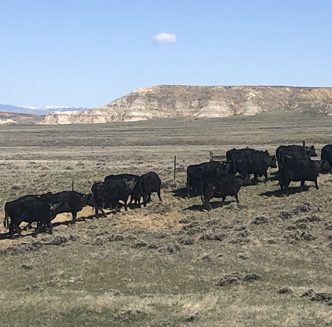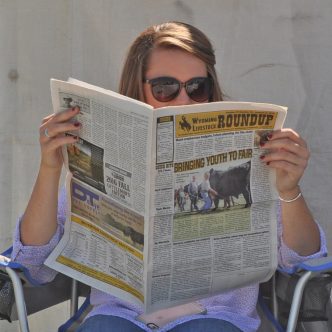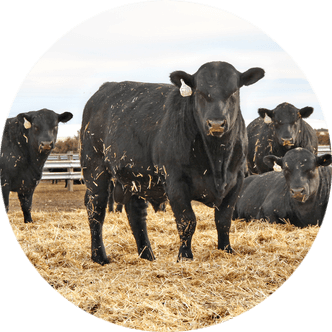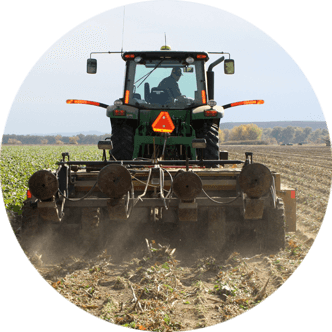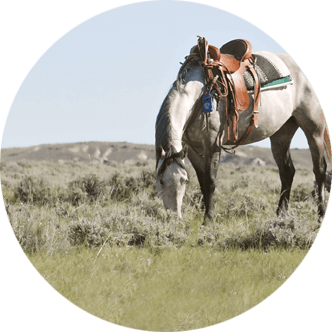Devastating wildfires blaze across the West
The hot, dry, blustery conditions and afternoon thunderstorms typical of late-August have contributed to several large wildfires burning across the West, prompting state and federal emergency declarations, localized evacuation orders and the establishment of several relief funds.
In an Aug. 21 Facebook post, the National Interagency Fire Center (NIFC) writes, “Across the country, 49 large wildfires are actively burning, having consumed 874,677 acres. More than 15,600 wildland firefighters and support personnel are assigned to incidents, including 15 complex incident management teams, 302 crews, 716 engines and 100 helicopters.”
“Hot, dry and windy conditions are pushing fire danger higher across much of the West, with temperatures well above normal and very low humidity in several states,” NIFC continues. “Scattered storms may bring lightning from California to Wyoming, creating the potential for new ignitions at the same time wildland fire personnel are working hard to contain existing fires.”
Wyoming wildfires
Currently, the Red Canyon Fire is the most significant blaze in the state of Wyoming, threatening numerous structures, ranches, guesthouses, RV campgrounds and other businesses, as well as some sprawling rural community zones.
According to InciWeb, the fire was ignited by a lightning strike on Aug. 13, 11 miles east of Thermopolis.
As of Aug. 21, the blaze had scorched a whopping 126,683 acres across Hot Springs, Washakie and Fremont counties, with 31 percent containment.
InciWeb notes the Red Canyon Fire’s rapid growth has been fueled by a combination of dry conditions and unfavorable wind and weather patterns, with firefighters battling temperatures approaching triple digits, near-zero humidity and erratic wind gusts.
The severity of the Red Canyon Fire has led to multiple evacuation orders, and on Aug. 19, Wyoming Livestock Board Director and Chief Executive Officer Steve True implemented an order allowing producers in Hot Springs, Washakie and Fremont counties to move livestock without brand inspections from the evacuation area to neighboring counties in Wyoming.
Additionally, the Sleeper Ranch Fire, ignited on Aug. 14 near Meeteetse, burned roughly 20,657 acres of grass, sage, juniper and limber pine on Bureau of Land Management and state lands along the west side of the Greybull River. As of Aug. 19, the fire was 90 percent contained.
As of Aug. 21, the Spring Creek Fire burning southeast of Ten Sleep was responsible for 3,599 acres of scorched earth. NIFC notes crews are busy securing the line and mopping up hotspots, making progress in recent days with 38 percent containment.
Other active fires blazing through the Cowboy State include the 524-acre Bull Lake Fire and 20-acre Indian Ridge Fire in Fremont County, the 145-acre Cold Spring Two Fire in Campbell County and the 39-acre Little Greys Fire in Lincoln County.
Other blazes
Widespread drought conditions have resulted in wildfire devastation across Wyomingʼs neighboring states as well.
In an Aug. 20 Mountain Journal article, Journalist Leigh Walden reports Montana’s wildfire season picked up in mid-August, with 48 new fires starting over the course of seven days.
Walden notes more than 48,060 acres have burned in Montana since the beginning of the year, with acres burned since July 21 representing 65 percent of this total.
Some of the most significant blazes in the Big Sky State include the Horn Fire at 2,800 acres and 95 percent containment; the McAllister Fire at 3,560 acres and 50 percent containment; the Bivens Creek Fire at 2,267 acres and zero percent containment and the Cloudrest Fire at 1,190 acres and zero percent containment.
In Idaho, nine wildfires are currently burning more than 31,000 acres, according to Walden.
The Watch Duty app shows, of these, the most significant are the Big Bear Fire at 15,517 acres and 70 percent containment; the Rush Fire at 7,908 acres and 90 percent containment; the Box Fire at 4,413 acres and 54 percent containment; the Rock Fire at 2,770 acres and zero percent containment; the Island Creek Fire at 2,393 acres and five percent containment and the 1,213-acre Elkhorn Fire.
In Utah, the Monroe Canyon Fire has burned through 73,722 acres in the Fishlake National Forest, with 86 percent containment as of Aug. 21, while the 5,282-acre Beulah Fire actively burns in the Uinta-Wasatch-Cache National Forest along the Wyoming border.
The state of Colorado has also been devastated by some big blazes, including the Lee Fire, which scorched 137,755 acres across Garfield and Rio Blanco counties, etching itself into history as the fourth-largest wildfire in the state – only 275 acres smaller than the historic Hayman Fire of 2002. InciWeb data shows the fire had reached 73 percent containment as of Aug. 21.
Directly to the east, the Crosho Fire had scorched 2,072 acres with 24 percent containment, while the next-door Derby Fire jumped to 2,625 acres with zero percent containment as of Aug. 21.
In Colorado’s southwest corner, the Turner Gulch Fire had burned through 31,699 acres with 80 percent containment; the Stoner Mesa Fire had burned 9,872 acres with 27 percent containment and the South Rim Fire had burned 4,232 acres with 60 percent containment, according to Aug. 21 data.
Robust response
In response, state and federal agencies have issued emergency declarations across these Western states, while others have set up relief funds to help those affected by the fires.
In Wyoming, Gov. Mark Gordon issued an executive order declaring an emergency response on Aug. 18, which will help the state access additional federal firefighting resources, request support from the Wyoming National Guard and direct the Office of Homeland Security to take action in coordinating state and federal resources in response to the fires.
“Once again, wildfires in Wyoming are creating significant impacts on our communities and threatening lives and property,” Gordon states in the Aug. 18 press release. “We will continue to ensure state resources are available to those affected by these fires.”
A few days earlier, on Aug. 15, the Federal Emergency Management Agency (FEMA) approved Wyoming’s request for a federal Fire Management Assistance Grant to help with the Red Canyon Fire.
“This authorization makes FEMA funding available to pay 75 percent of the state’s eligible firefighting costs under an approved grant for managing, mitigating and controlling designated fires,” Gordon explains.
Additionally, on Aug. 21, the Wyoming Stock Growers Endowment Trust announced the renewal of its Wildfire Relief Fund to assist Wyoming livestock producers who have been impacted by major fires this summer.
“The trust is a 501(c)(3) nonprofit entity established by the Wyoming Stock Growers Association (WSGA) in 1977 to ensure the future of Wyoming’s cattle industry through support for eligible programs which include keeping the next generation of ranchers on the land,” reads the corresponding Aug. 21 press release. “In addition to funding provided by the trust, the organization is seeking donations from businesses and individuals interested in assisting producers impacted by the fires.”
All donations are tax deductible and can be made by check payable to WSGA Endowment Trust, PO Box 206, Cheyenne, WY 82003; by credit card online at wysga.org; by credit card over the phone by contacting the WSGA Office at 307-638-3942 or by direct wire transfer.
The WSGA Endowment Trust will begin accepting applications for cash assistance on Sept. 1. An application form will be available at this time on the WSGA website or by calling the WSGA Office.
Hannah Bugas is the managing editor of the Wyoming Livestock Roundup. Send comments on this article to roundup@wylr.net.

